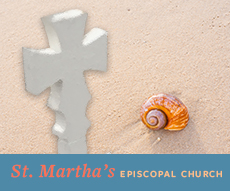
01 Jun The Holy Trinity
“In the beginning when God created the heavens and the earth, the earth was a formless void and darkness covered the face of the deep, while a wind from God swept over the face of the waters.” This is how the world begins, as described in the book of Genesis. God makes the world in seven days – light and darkness, water and sky, earth and vegetation, all living creatures – and over all living things he grants dominion to humankind, whom he makes in his image, “according to our likeness.” Once God has completed his work, he “saw everything that he had made, and indeed, it was very good.”
If we return to the opening sentence, however, and read again the words, “in the beginning…” a question arises, which is this: “If, in the beginning, God created the heavens and the earth, then who created God?” This is a sensible theological question with one answer. (Well, two actually, if you count the one that says God doesn’t exist, in which case you can stop reading now). For the believer, the only answer to the question, “who created God?”, is that no-one created God because God is uncreated. That’s the first theological principle. The second is this: God exists outside of time. Actually, time is one of God’s creations; we live in time, and in a certain sense we are bound by time, but God is not bound by time. God enters time through Jesus Christ.
That opening sentence in Genesis has more to tell us. It says, “a wind from God swept over the face of the water.” Whenever we read in the Bible about a wind blowing over, or through something, that usually signifies the action of the Holy Spirit. This is the Spirit which gives life. Another way of thinking about the Holy Spirit is that it is God’s breath – God breathes life into his creation, into the plants and birds and swarms of living creatures. The one creature whom God favors above all others is humankind. “So God created humankind in his image, in the image of God he created them; male and female he created them, and God blessed them.” (1:27-28)
The Bible is essentially the story of the relationship between God and human beings. Man and woman are happiest when they are living close to the image in which God created them: when they are creative, loving, and in harmony with each other and their surroundings. That harmony derives from a close relationship with God. The Bible has a lot to say about the benefits of that relationship and its concomitant requirement for obedience. It also illustrates the perils of ignoring or disobeying God. When the man and woman in the garden of Eden do what God has expressly prohibited, their world changes for the worse. Their disobedience has caused a rupture in their relationship with God. This rupture is repaired through the lives of those faithful servants whom God later calls, such as Noah, Moses, Abraham, Isaac, Jacob, Joseph and David. Eventually God sends his only son, Jesus, to save the world from disobedience and sin. It is Jesus who shows how true obedience to the Father’s will restores our true relationship with the Father.
The feast of the Holy Trinity, which occurs on the Sunday following the feast of Pentecost, draws us into the eternal mystery of God’s being, expressed in the three persons of the Trinity: Father, Son and Holy Spirit. Within their relationship we see the personification of God’s true nature, as a dynamic engine of love and service, bringing peace as a present reality and establishing God’s kingdom everywhere.
The easiest way to remember and acknowledge the Holy Trinity is to make the sign of the cross over yourself. God’s love flows from the power of the Trinity, and the cross opens the door to perceiving the depth and breadth of God’s love. By “drawing” the cross over ourselves, we are symbolically marking ourselves with the instrument of salvation, thereby signaling our identification with Jesus who was crucified for our sins.
God is Father, Son and Holy Spirit. The Father is the creator of the world. In the Old Testament he provides for the people of Israel and leads them to the promised Land. He comes to them in the fire and in the cloud (Exodus 13:21). God is also in the silence (1 Kings 19:12).
God the Son comes as one of us, born of a woman, Mary. The fulfillment of God’s plan and purpose depends on those who are willing, like Mary, to say “yes”. Jesus comes to us as a teacher and friend, gently revealing the path to life. He opens our minds, heals our souls and bodies, and offers himself, in obedience to the Father’s will, as a sacrifice for us (Hebrews 10:10).
God the Holy Spirit comes to us in the waters of baptism, where he whispers to us the words of life, as we enter into new life in Christ. He addresses us at Pentecost, when the Church is lacking in confidence and has not yet begun her mission. He comes to us now, especially to those whose hearts are seeking God, and fills us with the desire to follow and speak for God, often in the face of indifference or hostility.
God: Father, Son and Holy Spirit. They are united as one and bound in love. From them flow a limitless stream of love for the world.
In the name of the blessed and undivided Trinity,
Father David




No Comments